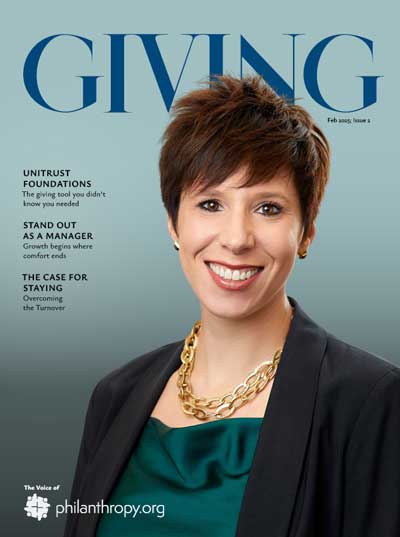Anytime you buy something, you get what you paid for. In fact, it’s nearly impossible to not “get what you paid for,” because you paid for it, and you got something!
But that’s not what you really mean, is it?
When we say “we got what we paid for,” we’re typically talking about value. In other words, do we feel that we received our money’s worth? Did we think that what we received was at least, if not more valuable than what we paid for it?
It makes us feel good when we do. Especially as a nonprofit with an already-tight budget and limited resources, it’s good to understand cost and relative value when making investments.
For example, if you see one kind of apple for $0.50 and another for $1.25, are you “getting what you paid for” at $1.25? You might not think so— until you compare the size of the apple, get a whiff of its sweet smell, and judge the thickness of its skin. You might conclude that yes, $1.25 is a great value because that apple is so much better than it’s $0.50 cousin.
You know apples. But what about training for your nonprofit? What is value? Let’s walk through a few elements of any nonprofit training that can come into play.

This is the first one that most people jump to, and for good reason. We’re trained to think expensive equals better, especially when it comes to education.
Think of college. If you paid more, it must have been a better school, right? Wrong. Having taught at an Ivy League university, a small private college, and a public university, I can tell you without reservation that educationally, all were pretty much the same.

We took a whole day on planned giving, so it must have been a value, right? Wrong again! This would be like rating a restaurant five-stars because the portions were huge. Just because you take a lot of time, it doesn’t mean you get what you paid for. Anyone can deliver quantity. It’s quality that counts!

The experience of the presenter is important to take note of. You want an experienced professional, for sure, but does that equate to value? Ask yourself about that planned giving officer who has 20 years of experience. Did they just do the same mailings each year for 20 years in a row, or did they grow themselves and their program, and learn something new with each and every year? And what, from their experience, can bring value to your organization?

Then how about talent? The best fundraiser must be the best fundraising teacher, right? Not so fast. Superstars on the sport fields don’t typically translate into great managers or coaches.
Why? Because any of us who are naturally talented at something don’t understand why others aren’t, too. In fact, it frustrates us when others don’t “get it” as easily. Ted Williams, the last person in baseball to hit .400 (an amazing batting average, if you don’t know), was at best a so-so manager.

You certainly want someone with self-assurance, right? Yes, to a point. Being an instructor can really inflate an ego. That’s a rush for them, and a problem for you. Besides leading to irrelevant war stories, it can result in over-filling of course content to show what they know, rather than focusing on what you need.
So, if cost, length, experience, talent or self-assurance don’t necessarily translate into value for your nonprofit training dollar, what does? Luckily, there are a few more characteristics to look for.

The instructor who is passionate about nonprofit planned giving will approach the charitable remainder unitrusts with an enthusiasm that will come through in their presentation. That passion not only makes their presentation better, it will transfer to those attending (Yes, even for CRUTs!)

This is right up there with passion. The curious person won’t stop at knowing something (like how a CGA works). They’ll want to know all the why’s and how’s about discount rates, too. And stemming from that curiosity is often the desire to teach and to share, meaning they’ll be the right person to help you and your team understand it as well.

A lot of people are afraid of discussing planned gifts because of their underlying fear of death (despite what seems like the tendency of every gift annuity recipient to live past their life expectancy!). Having empathy for the timid, especially in such a sensitive subject matter, really helps the learner and translates to overall value for the program.

You know that five minutes spent talking to a donor about their will can raise all sorts of questions. Multiply that by a full classroom or crowded online session, and it can take a lot of time and repetition to see that everyone understands the concepts that are at the heart of the nonprofit training program. Be sure to find an instructor that will work with you through any obstacles.

In the end, the nonprofit training you receive needs to be applied in your day-to-day world. While it may be interesting to know about a charitable lead trust, most planned giving officers won’t apply the knowledge— so focusing a half-day of your Planned Giving 101 session really isn’t practical. In fact, sometimes simplicity is key.
The point is that to get what you paid for (and more) you need to know what you’re looking for. You don’t need the Fundraiser of the Year,— the one who thinks that telling about their donor conquests is training— or even the highest price. In nonprofit training, the obvious clues don’t always work. It’s not comparing apples and oranges. It starts with knowing what a good apple looks like!



